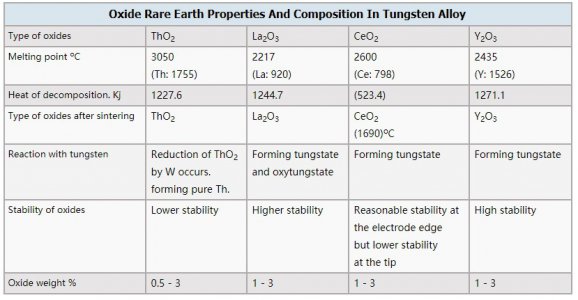- Joined
- Jan 10, 2019
- Messages
- 1,042
Apples and oranges - two completely different types of "radiation."Probably get more radiation from all the WiFi everyone is around in my opinion.Doing it 10hrs a day is a lot different than a weekend warrior.
Apples and oranges - two completely different types of "radiation."Probably get more radiation from all the WiFi everyone is around in my opinion.Doing it 10hrs a day is a lot different than a weekend warrior.
I don't keep welding after I contaminate the tungsten, so I can't comment which works better after a dip. I don't see any real difference in which one is more likely to get contaminated, but there are known differences in how electrodes react with the puddle so it's got to be a chemistry/electrical issue. The puddle is always going to get trace amounts of contamination from the tungsten, and that will even drive what type of tungsten is used for critical applications.I very quickly noticed that it tolerated dipping much better, keeping a useful point and picking up less metal from the puddle. More time welding, less grinding, longer tungsten life.
Has anyone else noticed this, or do the rest of you just stay out of the pool?
I don't keep welding after I contaminate the tungsten, so I can't comment which works better after a dip. I don't see any real difference in which one is more likely to get contaminated, but there are known differences in how electrodes react with the puddle so it's got to be a chemistry/electrical issue. The puddle is always going to get trace amounts of contamination from the tungsten, and that will even drive what type of tungsten is used for critical applications.
I've compared 2% lanthanated, 2% thoriated and several of the new trimix blends on the same work and the only thing I really notice is that the thoriated won't hold a point quite as long as the other two....not a huge difference, but it's enough that it's obvious. I don't like running any size tungsten near the top end, so that may be a factor as well. I keep 1/16, 3/32 and 1/8" on hand...I probably don't run 3/32 much over 150A regularly.
1.5% lanthanated and ceriated definitely shouldn't hold up as well as 2% thoriated, so that makes sense.I've had exactly the opposite experience... I've tried 1.5 and 2% lanthanated and ceriated and, for me, the thoriated holds up better at higher amperages. Less than 125 amps, I can't tell any difference between them.
Do you suppose it may be a difference in brands? IDK...
FWIW, I run an old Miller Dialarc 250 HF transformer... I've never used an inverter machine...
-Bear

You're a better man than I. If I stopped to regrind every time I dipped I'd never get anything finished.I don't keep welding after I contaminate the tungsten, so I can't comment which works better after a dip.
I think we all start out that way...but I'm stubborn and after countless hours of practice I got good enough it doesn't happen too often now. I honestly think learning aluminum was a big part of that...forget trying to keep going once you've dippedYou're a better man than I. If I stopped to regrind every time I dipped I'd never get anything finished.

I'm not just starting out. Welding classes in '78, 20+ years in the machining business and having to be the weldor when we didn't have one. I'm just not steady nor coordinated enough. I couldn't play drums either.I think we all start out that way...but I'm stubborn and after countless hours of practice I got good enough it doesn't happen too often now. I honestly think learning aluminum was a big part of that...forget trying to keep going once you've dipped
I'm not just starting out. Welding classes in '78, 20+ years in the machining business and having to be the weldor when we didn't have one. I'm just not steady nor coordinated enough. I couldn't play drums either.

